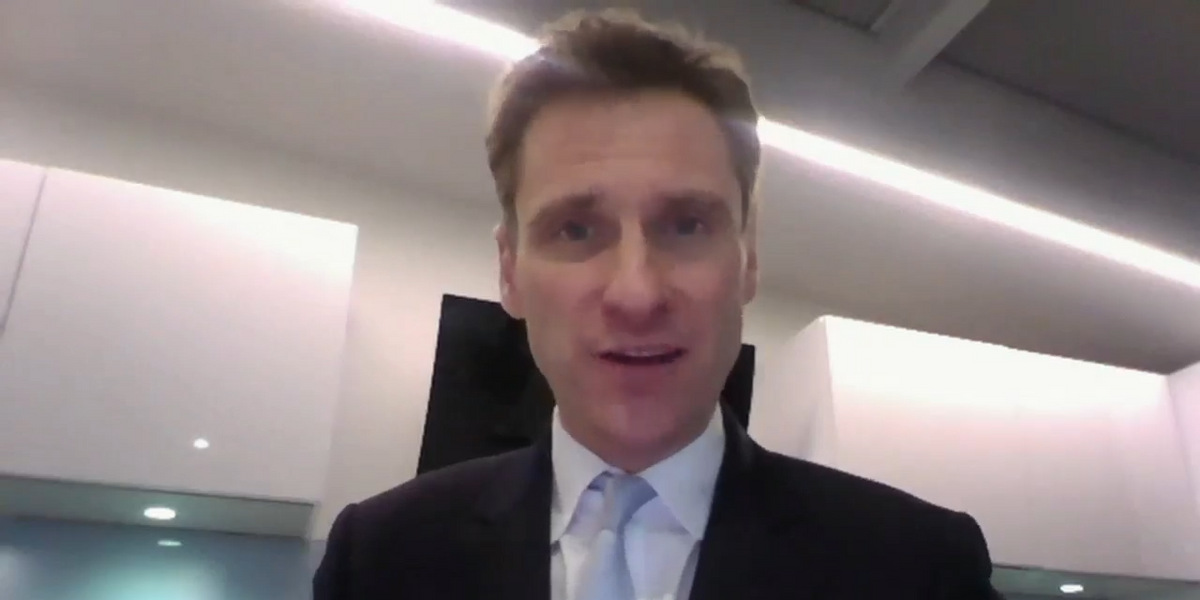This delicious little treat certainly brings out the best in the audience, setting the tone for an evening of festive joy.
On the whole, this production of A Christmas Carol is full of magical surprises, music, and humour: it really is no wonder that this adaptation of Charles Dickens’ 1843 novel has triumphantly returned for its seventh year at The Old Vic this holiday season.
Ebenezer Scrooge gets a shock on Christmas Eve as he is firstly shocked by the spirit of his dead business partner, Jacob Marley, who tells him that he will be visited by three phantoms that night – the ghosts of Christmas Past, Present, and Christmas Yet to Come – who will challenge him to face the consequences of a life lived in misery.
Hugh Vanstone’s lighting design used lanterns that were dangled beautifully above the stage to evoke Victorian London. The movement of light in this production was particularly special, creating a twinkling-like effect of Christmas light displays. Rob Howell’s set design also perfectly chimed with the industrial 19th Century: metal door frames highlighted the four key entrances and exits to an almost-in-the-round stage which again allowed for so much movement in the playing space.
These doors were a metaphorical symbol, too, of the choices Scrooge makes throughout his life, and the different people who enter and exit it. Another inventive element of the stage design was the money boxes which slotted in and out of the stage itself, a nod to what weighs down the ghost of Jacob Marley in Dickens’ story.
Christopher Eccleston, as Scrooge, was constantly shifting these blocks around, drawing attention to the puzzle his character is faced with as he tries to make sense of the spiritual riddle laid out before him.
A complimentary mince pie is part of the fun at The Old Vic
KATIE BOWEN
Stage versions of A Christmas Carol have proliferated in recent years. Perhaps most notably, the Royal Shakespeare Company in Stratford-upon-Avon has had several successful runs of Dickens’ classic. Jack Thorne’s adaptation at The Old Vic, though, whips through the five staves of the novel at some pace compared to the RSC’s version which remains much more faithful to Dickens’ narrative.
At The Old Vic, certain moments are edited out, while others are expanded or invented, which at times leaves things slightly unbalanced. There didn’t seem to be a gradual change in Scrooge’s outlook; instead, the shift from miserable old financier to Christmas enthusiast was more sudden and abrupt than the original tale, where shades of Scrooge’s realisation slowly emerge throughout his time with the three ghosts.
Another surprising change was how Thorne’s version had Scrooge interact with the various different visions. The poignancy of such scenes usually comes from Scrooge watching, in a detached sense, various moments from his life play out before him: observing his younger self experience the painful relationship with his father, for instance, or seeing his own coffin and people reacting to his death.
Thorne’s adaptation, though, had the Scrooge of the present moment in the story actually interacting with the figures in these illusions. This involvement damaged the magic of A Christmas Carol; what is so touching is often how Scrooge is frozen out of these moments and rendered helpless as he is forced to watch a replay of his life while not having the power to change or justify it. By having Scrooge sometimes break into these images meant that some of the emotion and pain was lost.
Christopher Eccleston – of Doctor Who fame – took up the mantle of Ebenezer Scrooge this year. Especially in the first half of the play, his performance felt rather too-placed and perfect. In the opening scene, Scrooge’s immense cruelty towards Bob Cratchit didn’t really land with Eccleston’s take.
This was a different kind of Scrooge, then, not one who is exceedingly nasty, but just grumpy and generally miserable. Where Eccleston truly came into his own, though, was in the second act, which was sublimely chaotic and full of Christmas wonder.
If you’re heading to The Old Vic, expect some spectacular surprises and audience involvement; the unique staging really gets this going full throttle. The auditorium was transformed into a heady Victorian Christmas party, much to the delight of audience members of all ages – this was an example of how the power of theatre can be harnessed in the most joyous and unique way, creating pure fun which you couldn’t help but smile at.
This rousing atmosphere allowed Eccleston to loosen up – his performance of ‘transformed’ Scrooge was much more convincing than that of the first act.
Musicians on stage at the start of A Christmas Carol
KATIE BOWEN
As Dickens arranged A Christmas Carol by ‘staves’ instead of ‘chapters’, the prominence of so much beautiful music in this production certainly made sense. The performance was punctuated by carols – Alan Berry and Mike Steel’s musical direction created stunning moments where snatches of carols like ‘O Holy Night’ rang out, but were partially obscured or cut off before becoming fully recognisable.
This kind of music rumbled on throughout, evoking a particularly nostalgic mood of Christmases long ago. The importance of sound was especially foregrounded in perhaps the most powerful moment of the play when the Ghost of Christmas Present shows Tiny Tim’s death – Rob Compton did an excellent job as Bob Cratchit here.
Despite some issues with how Thorne adapts Dickens’ tale, and a slightly unbalanced performance from Eccleston, A Christmas Carol at The Old Vic should be remembered primarily for its extraordinarily uplifting and jolly atmosphere whilst having huge amounts of fun in experimenting with just what the art of performance has the capacity to do.
A Christmas Carol plays at The Old Vic until 6th January 2024. Book tickets here: https://www.oldvictheatre.com/stage/event/a-christmas-carol-2023












